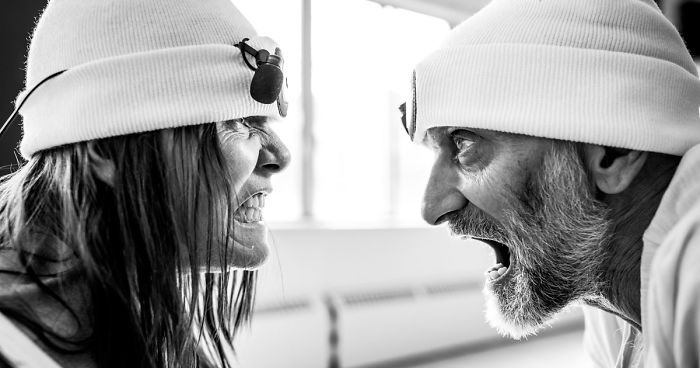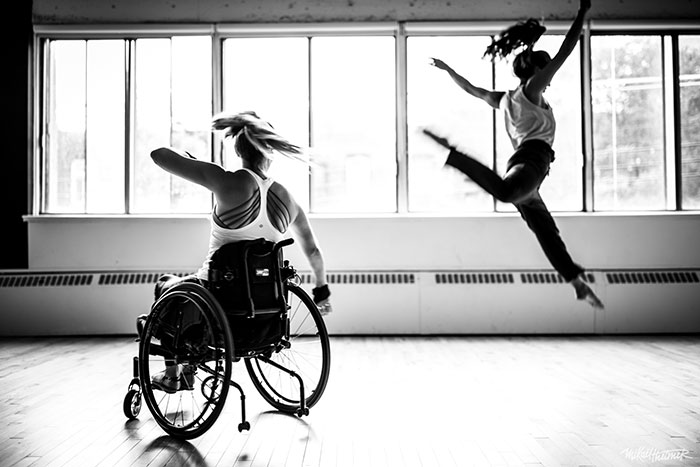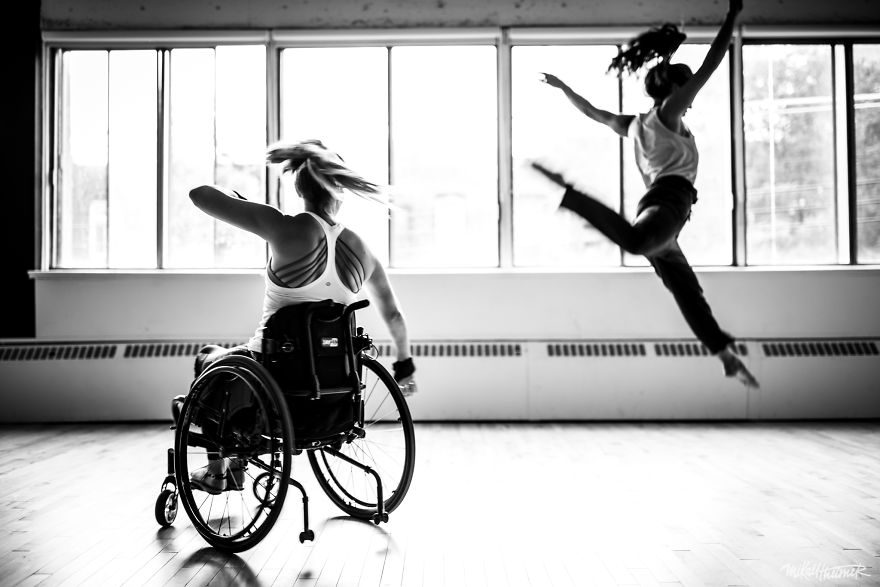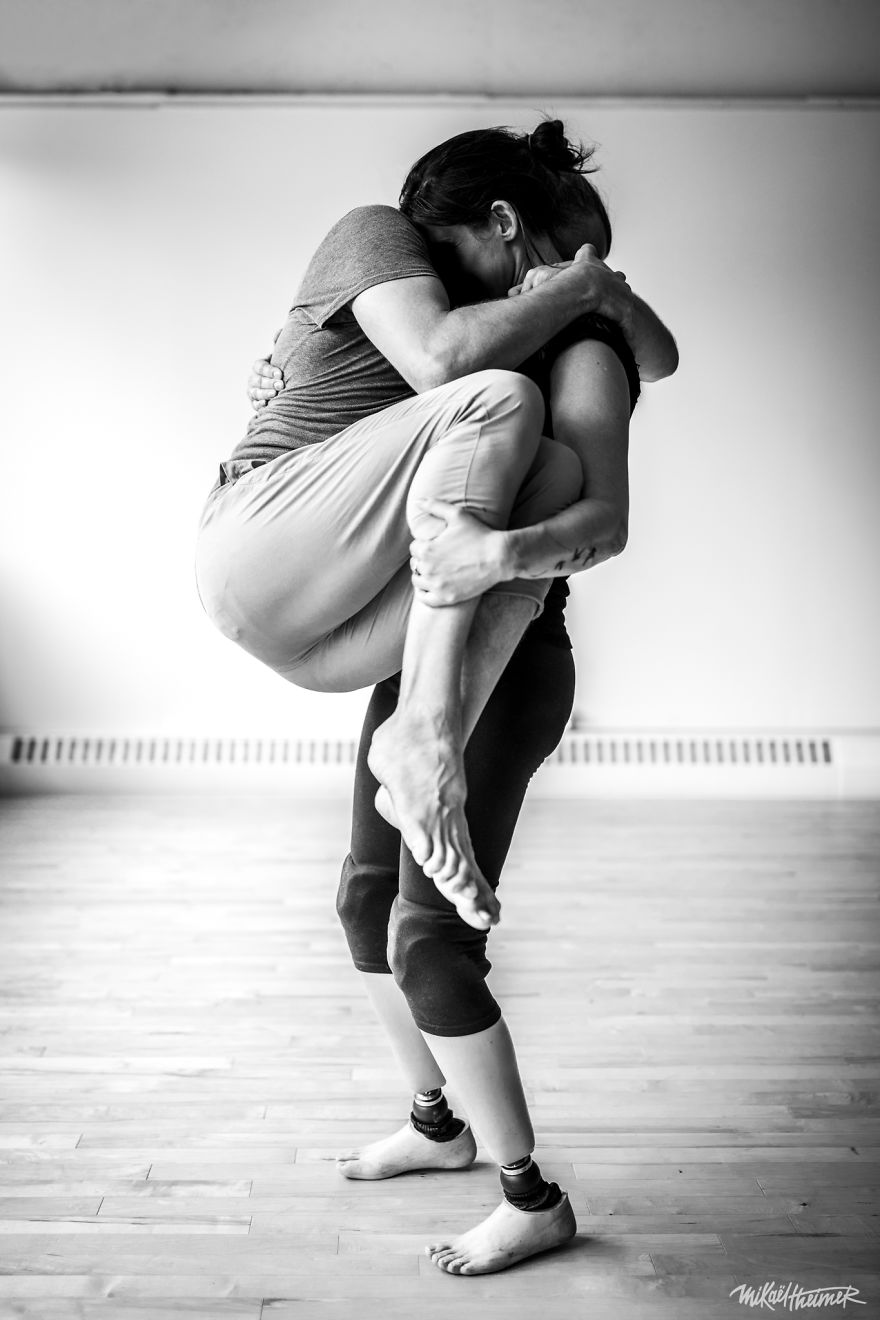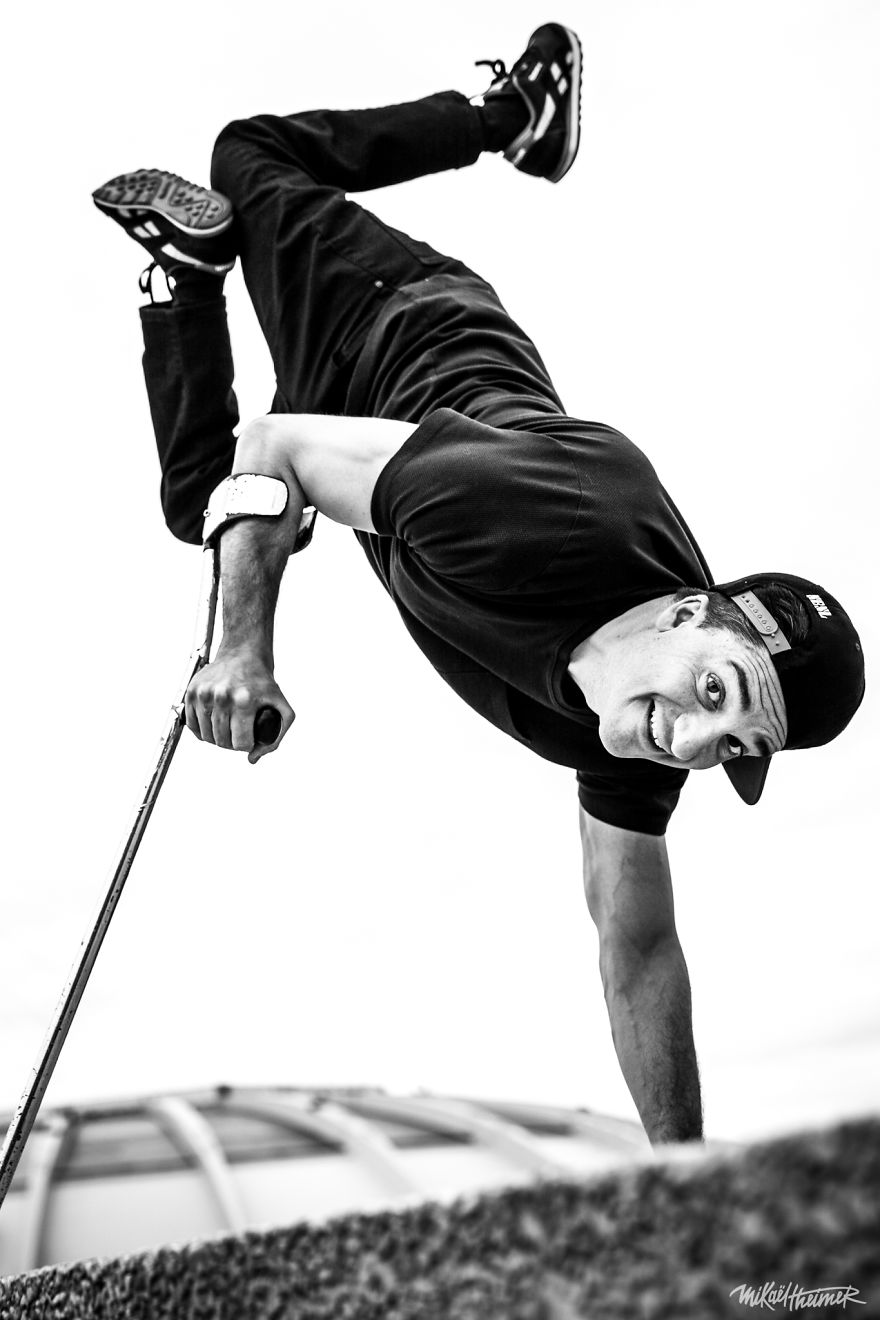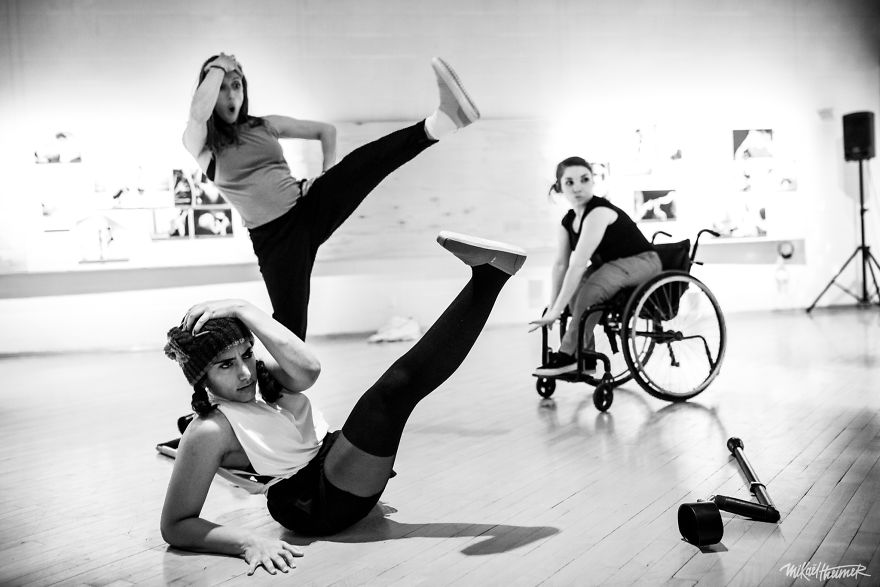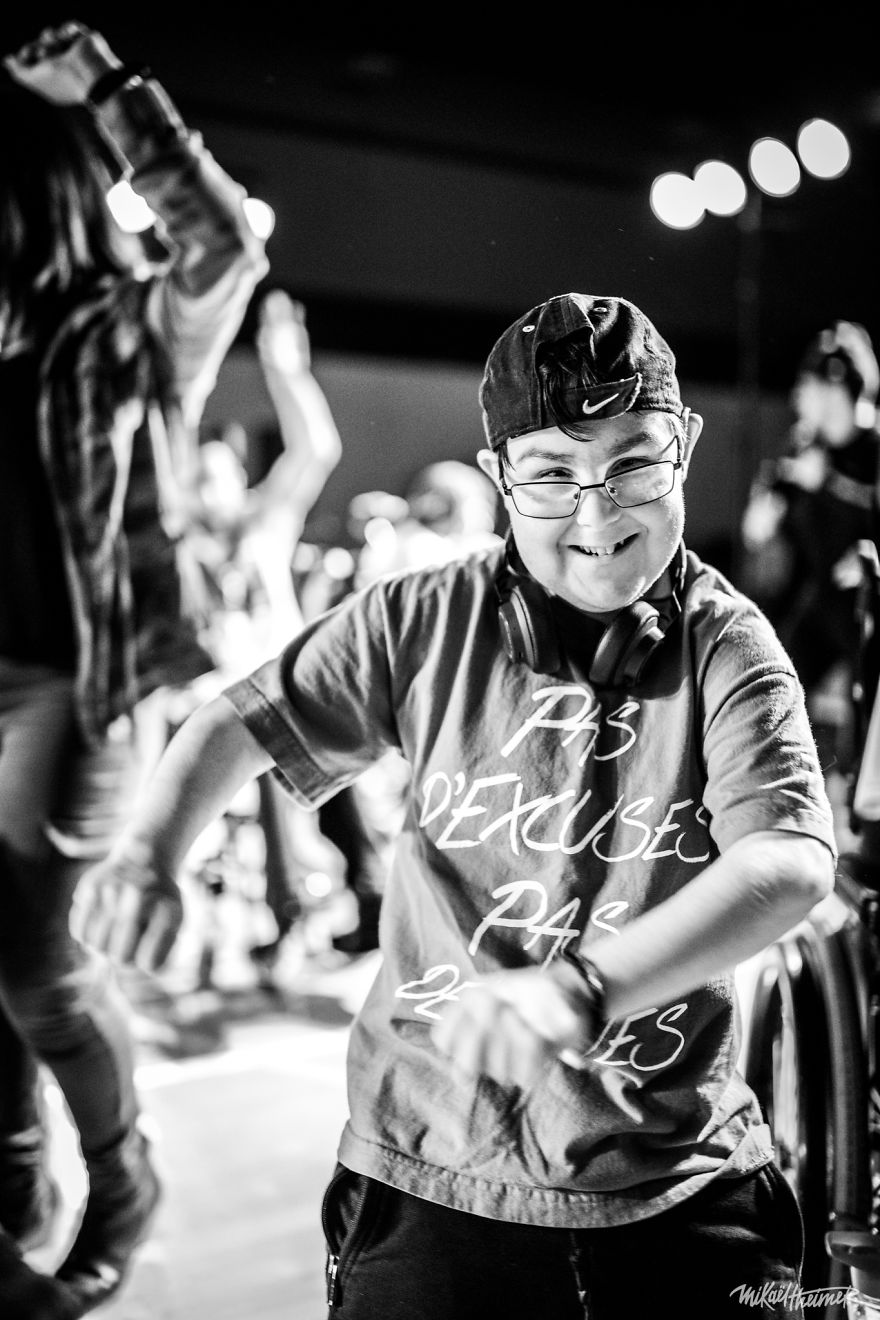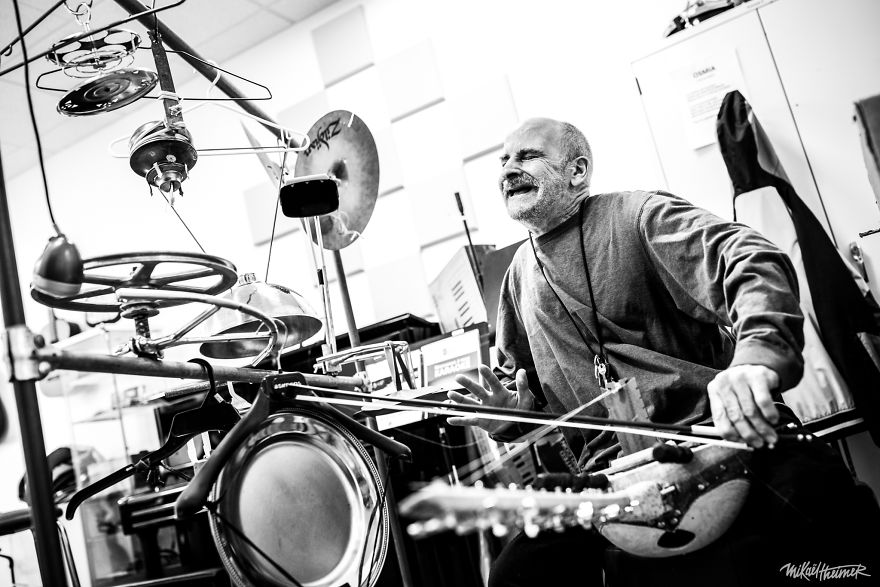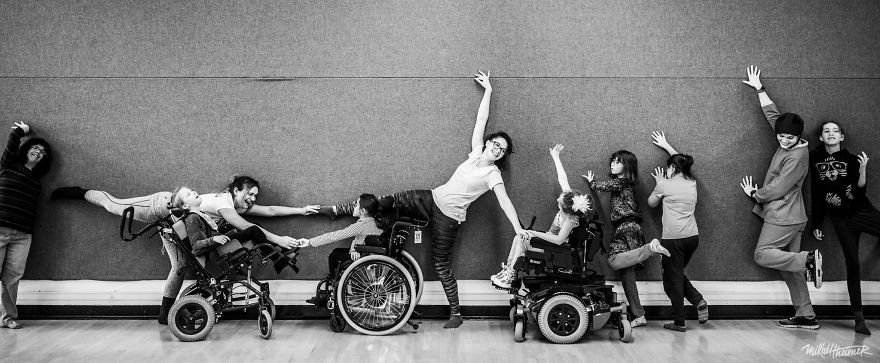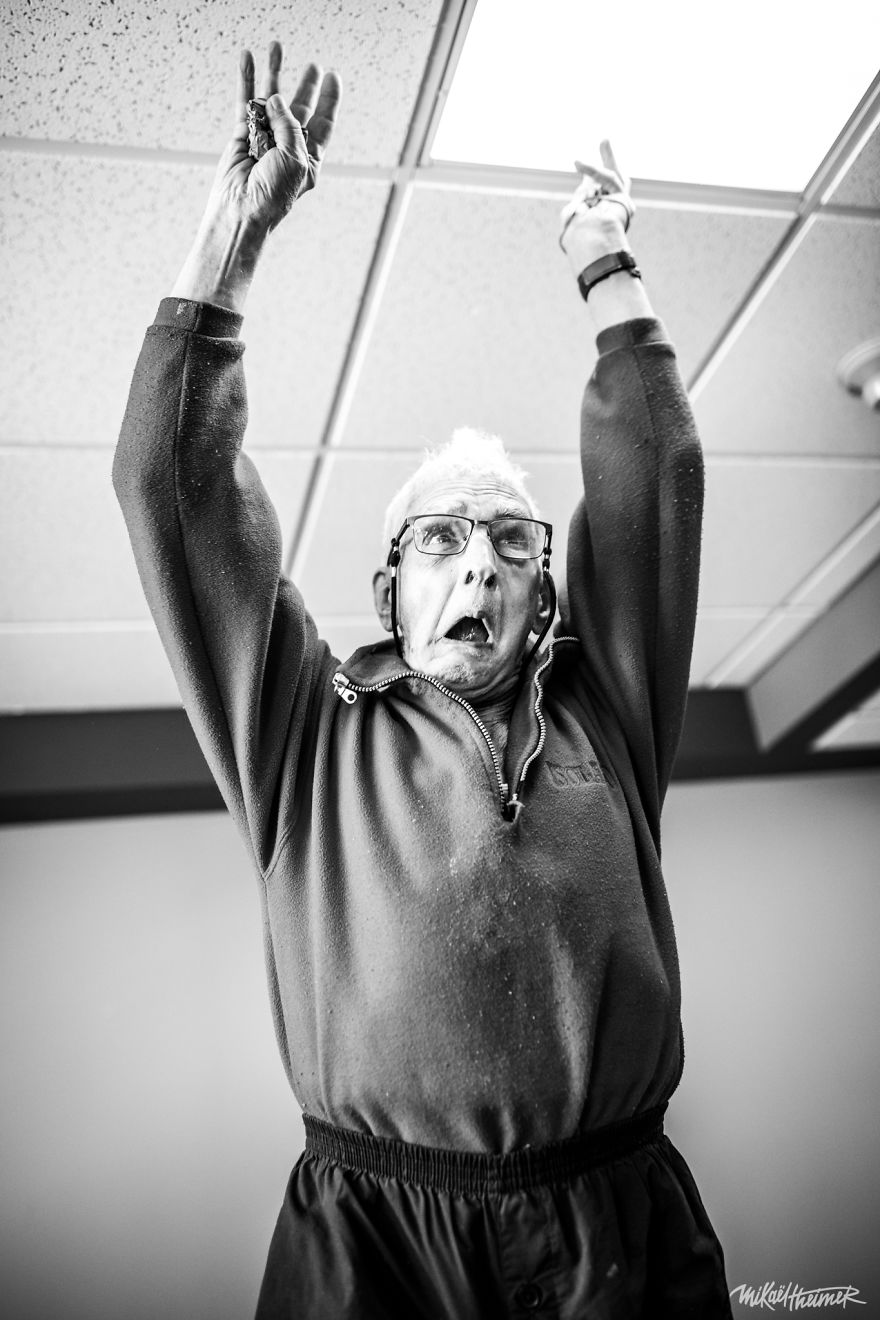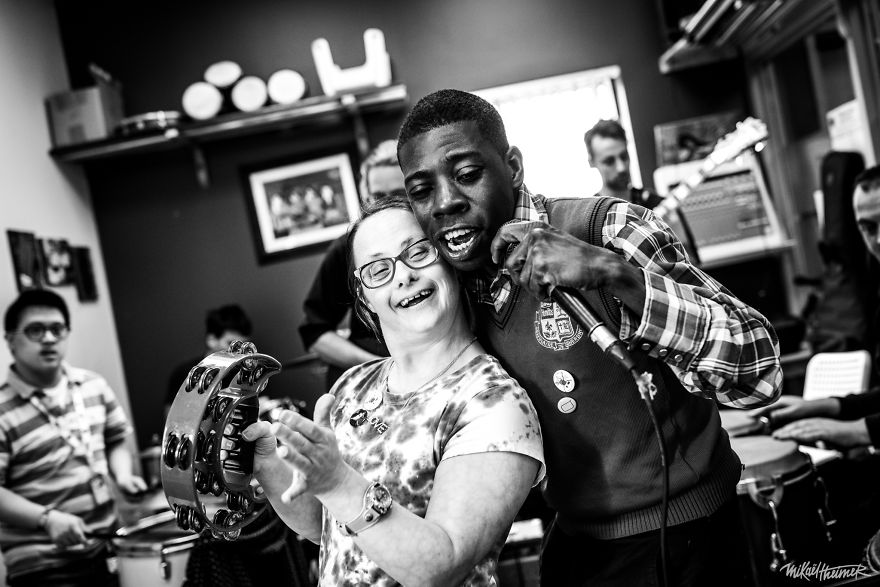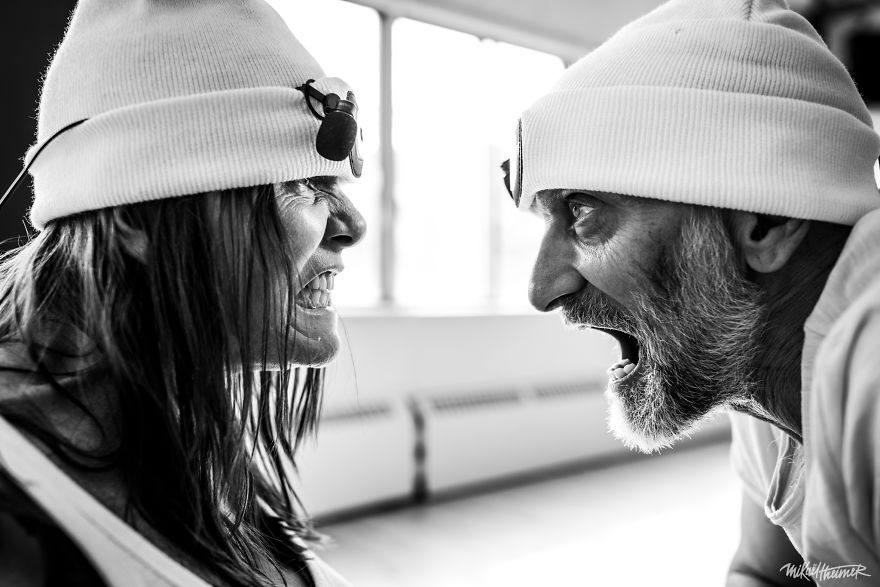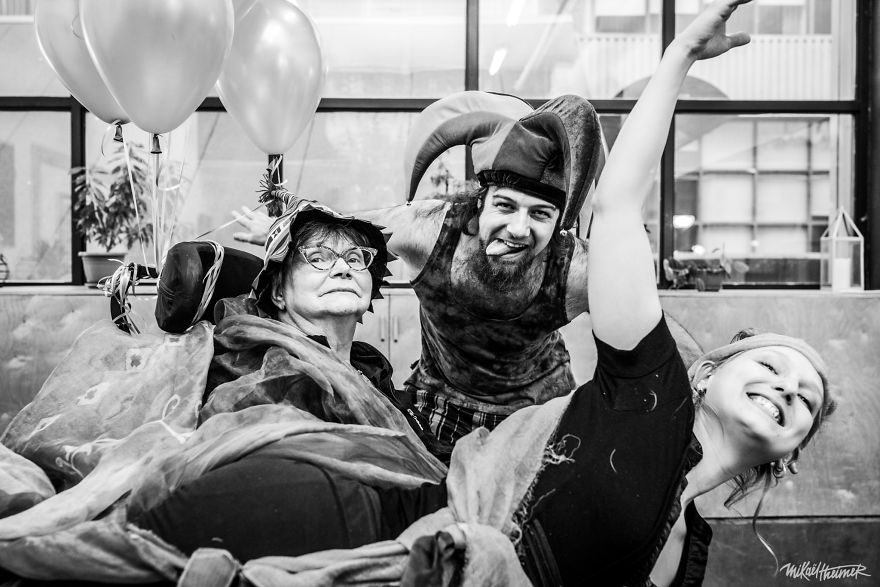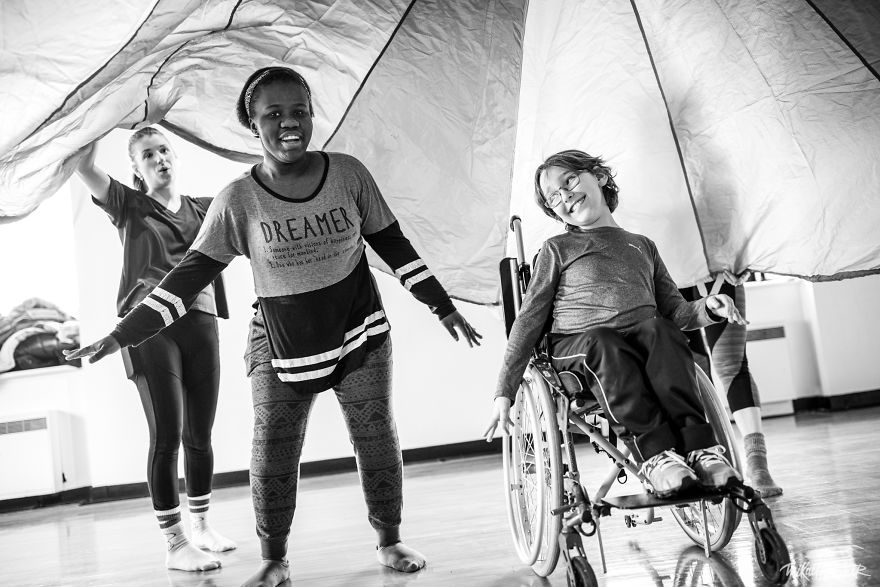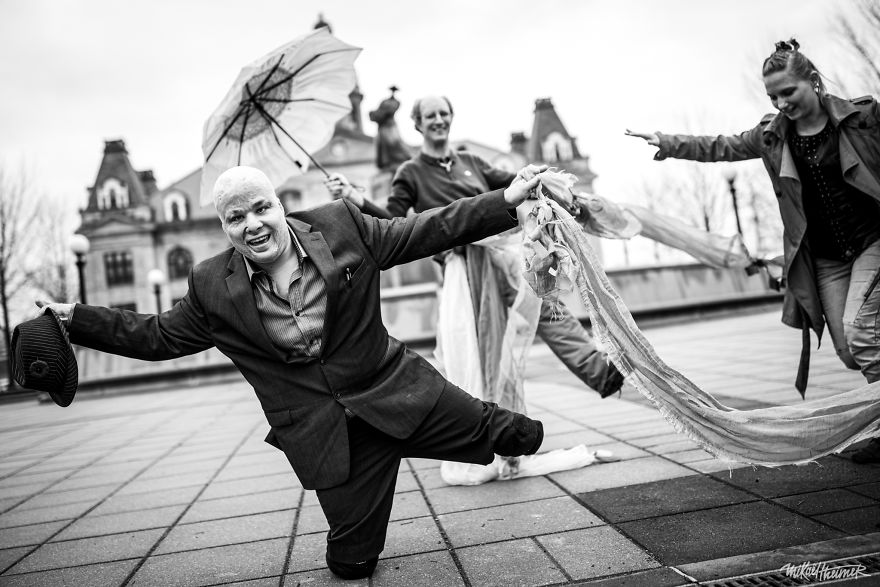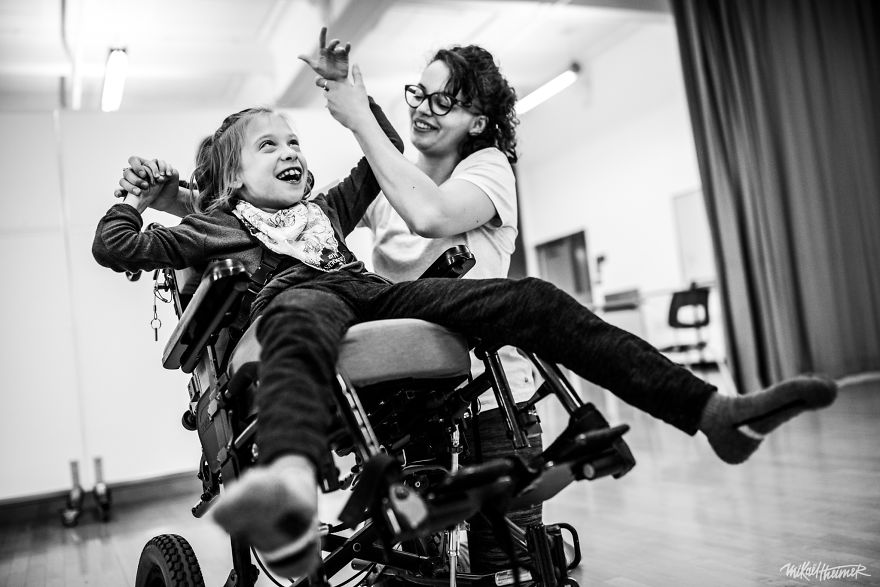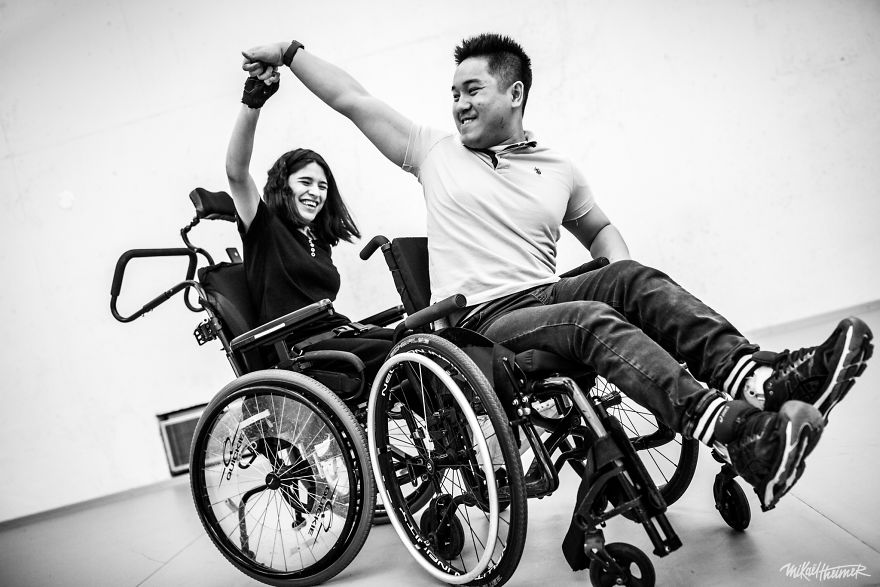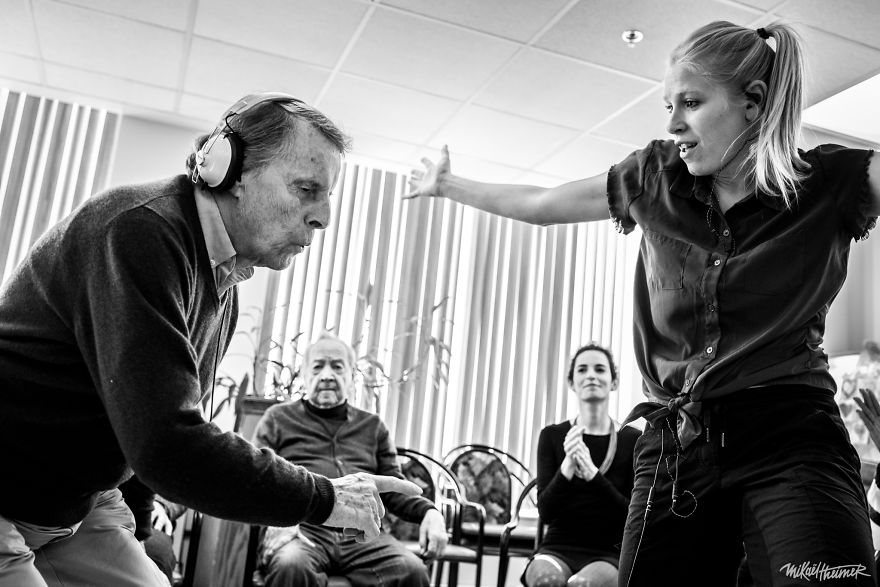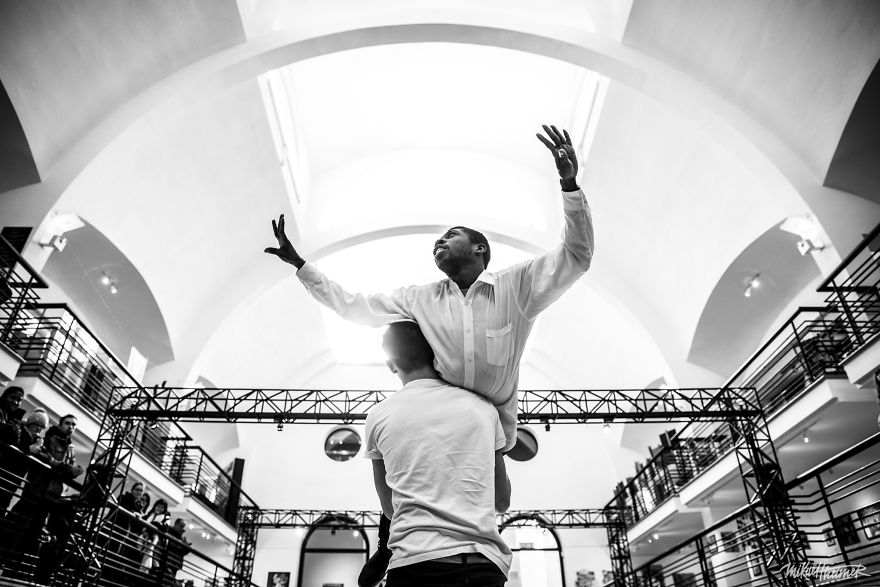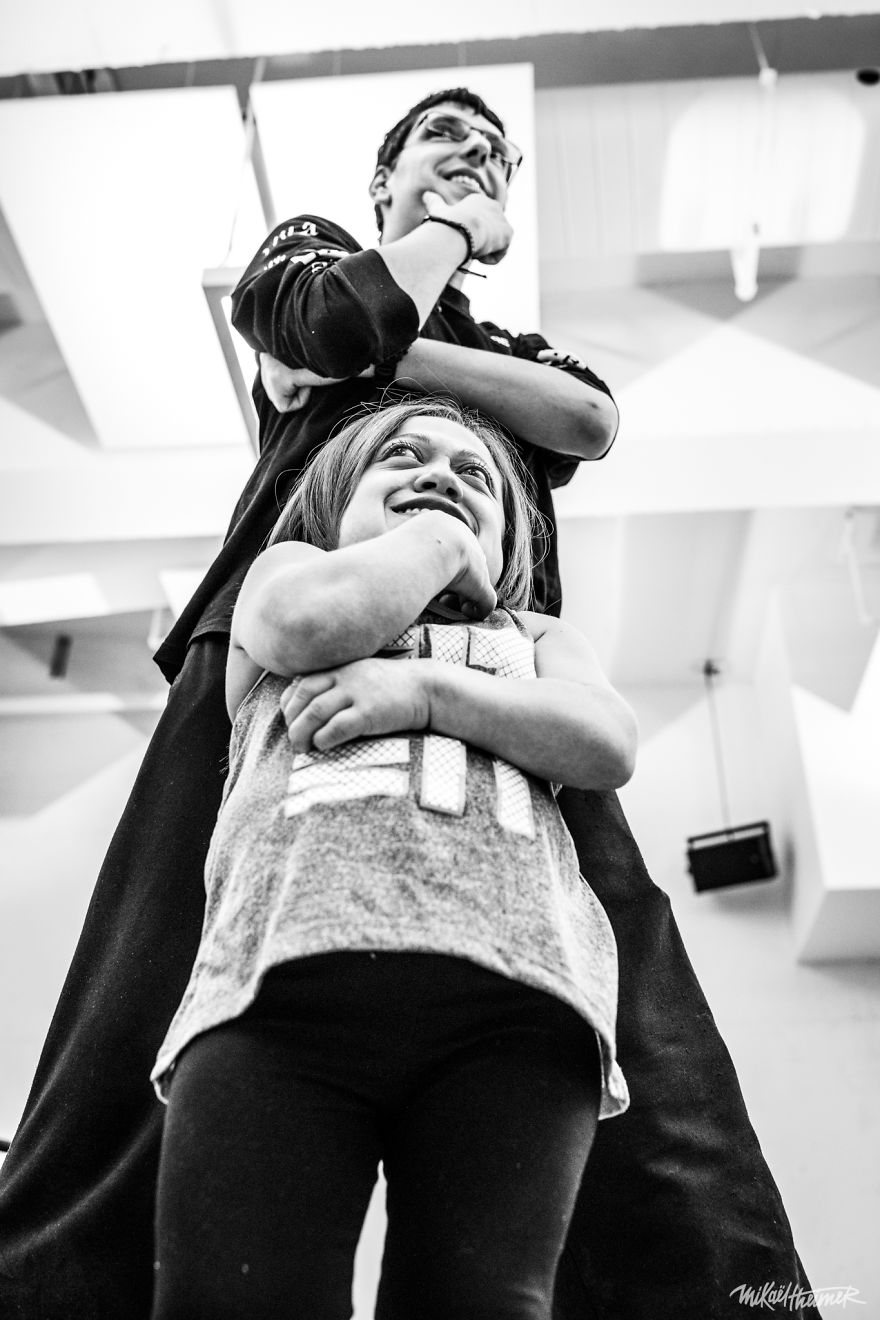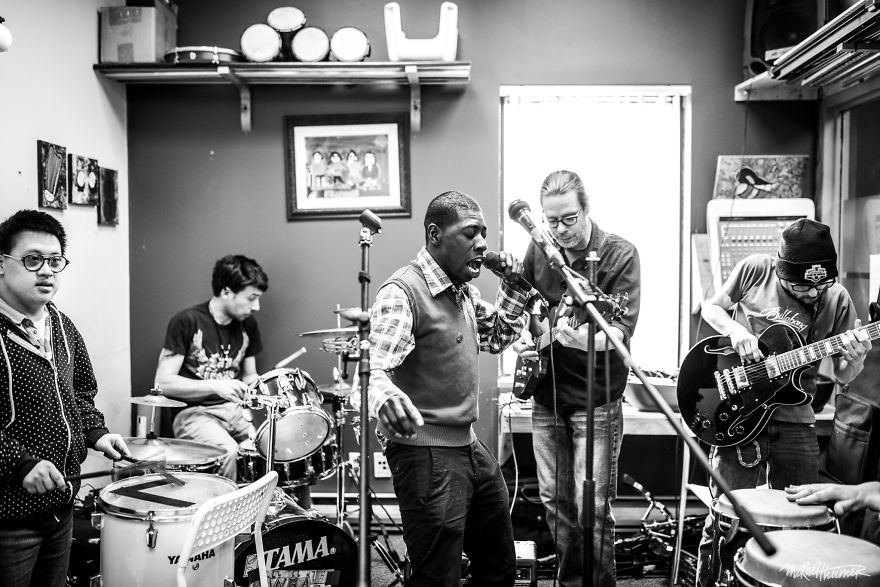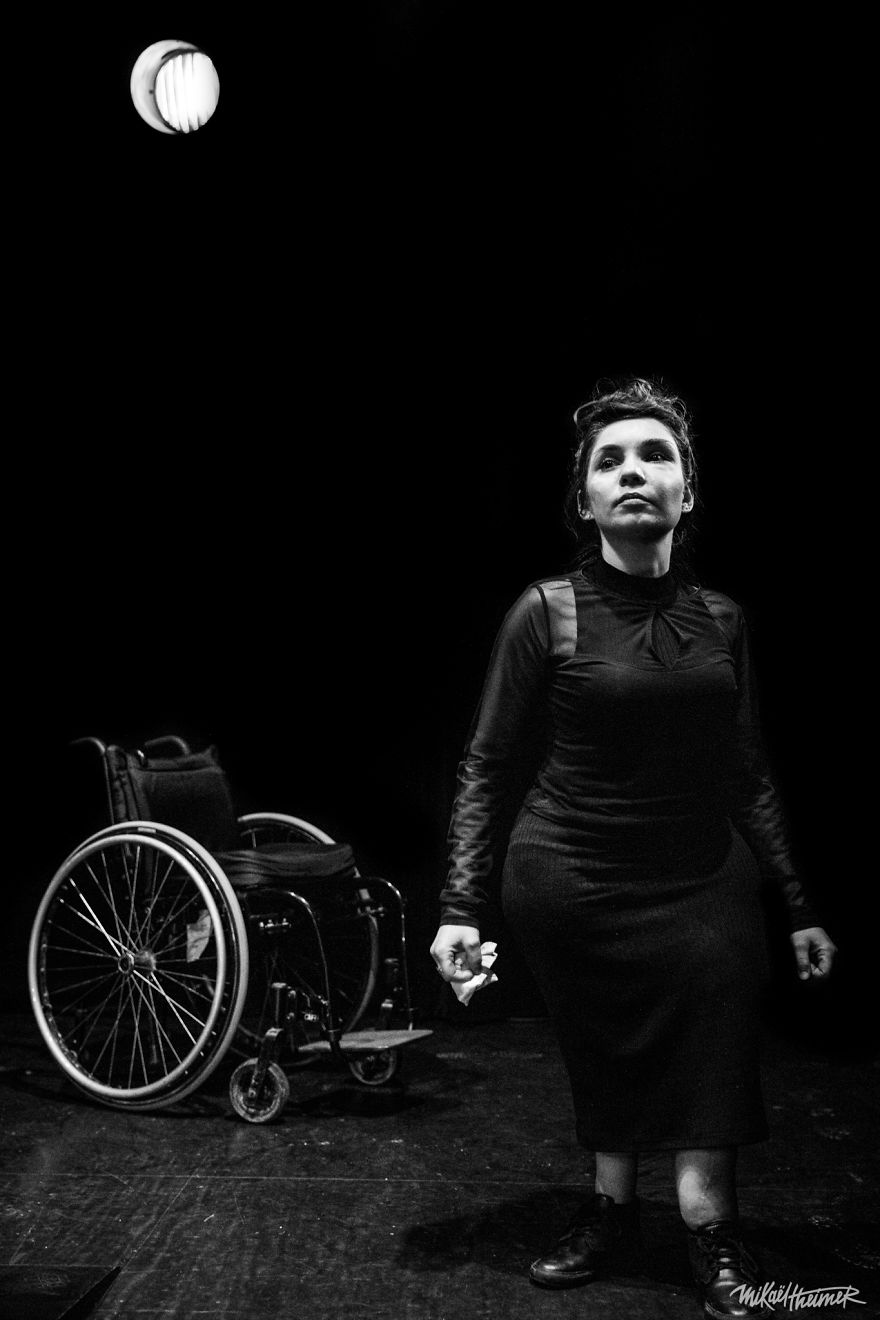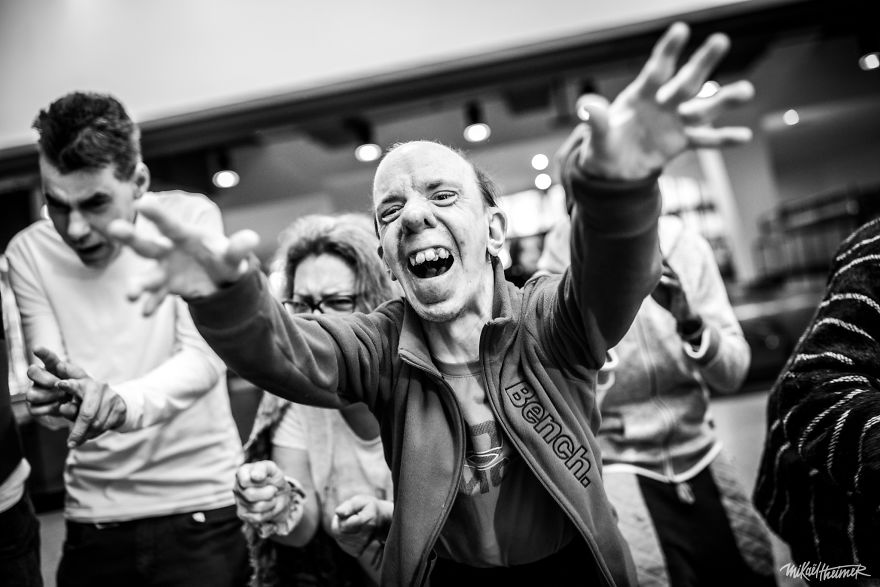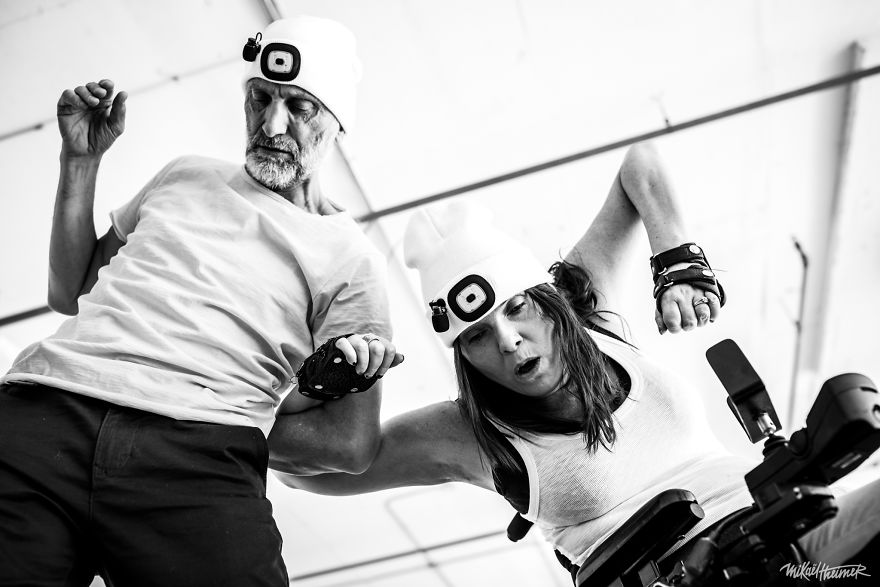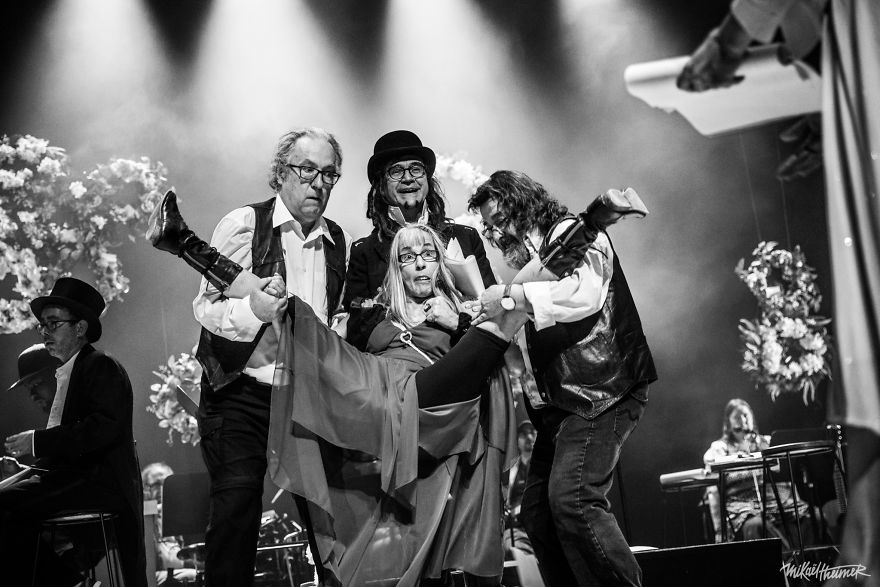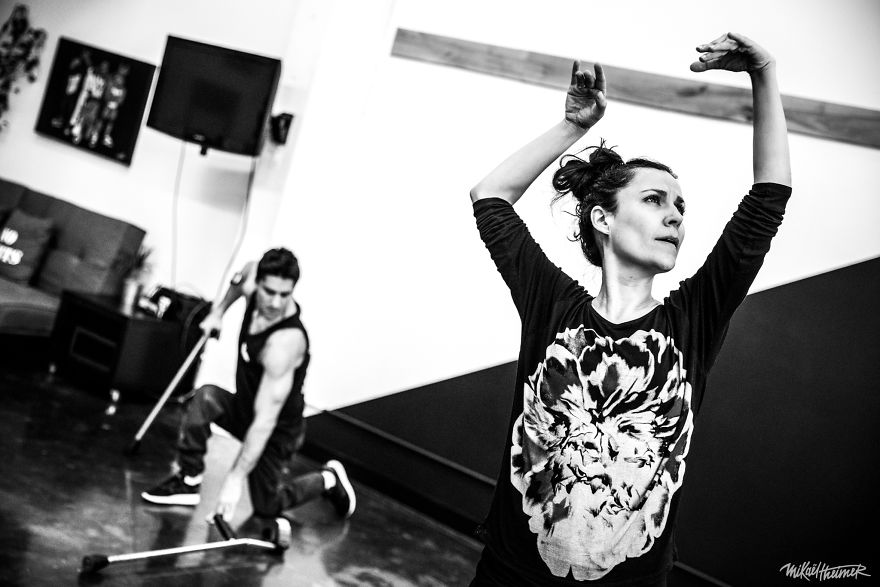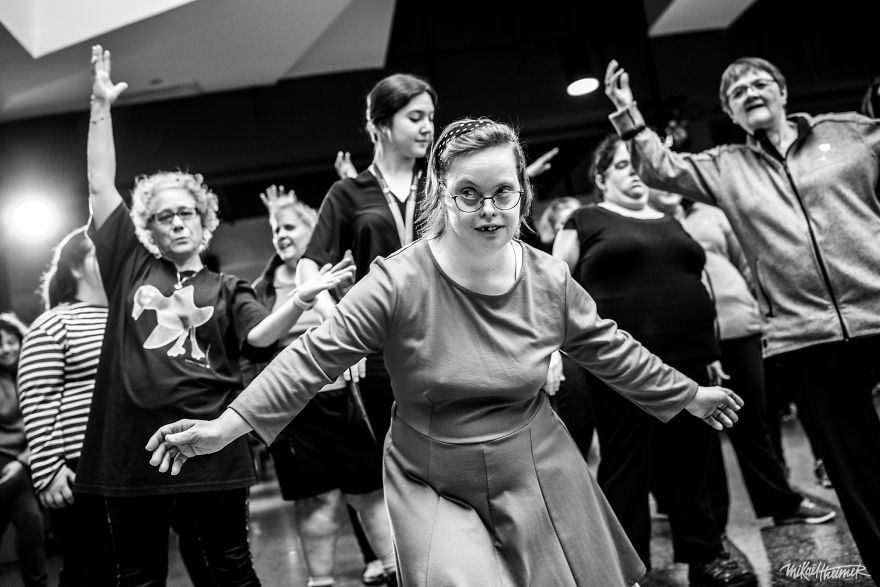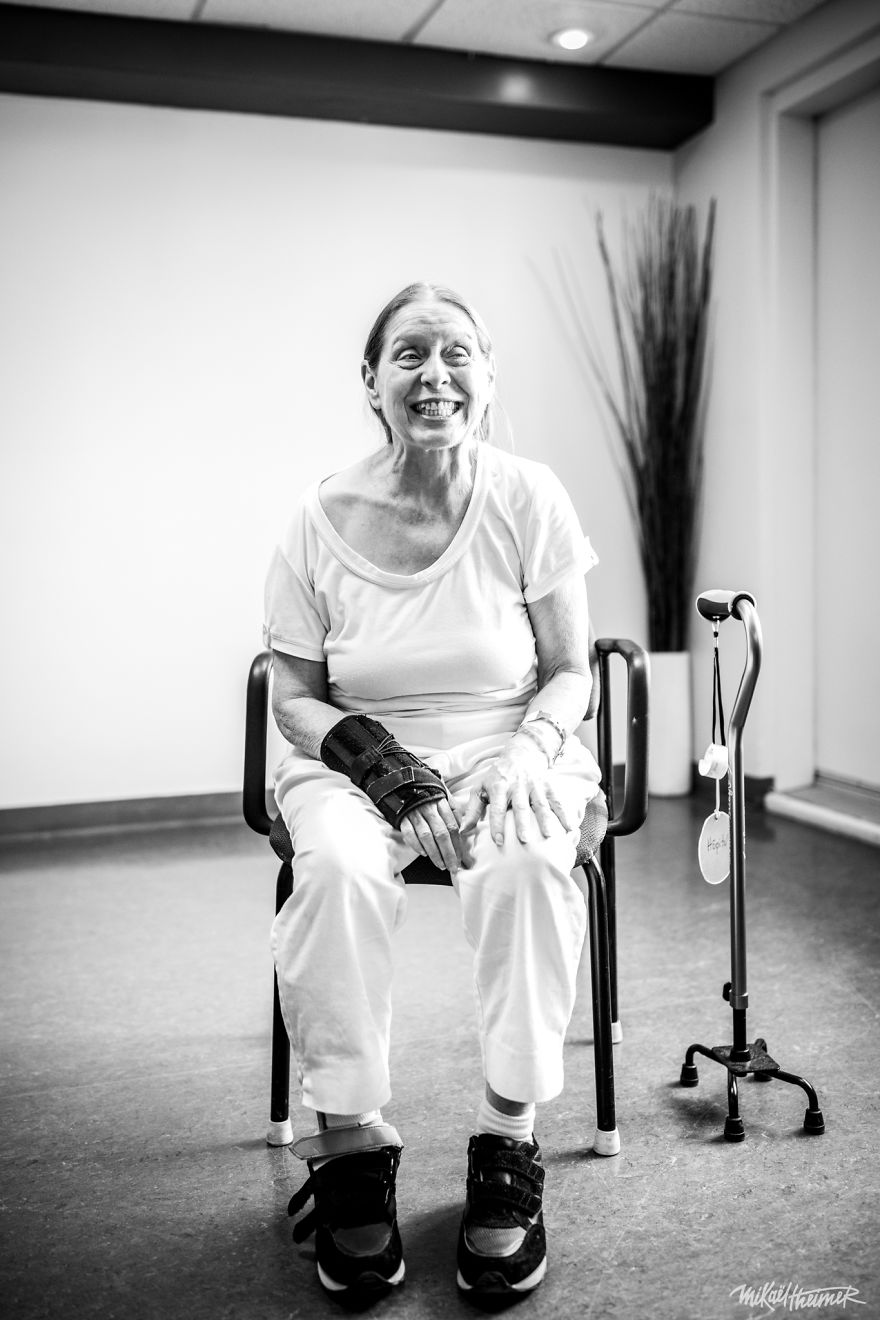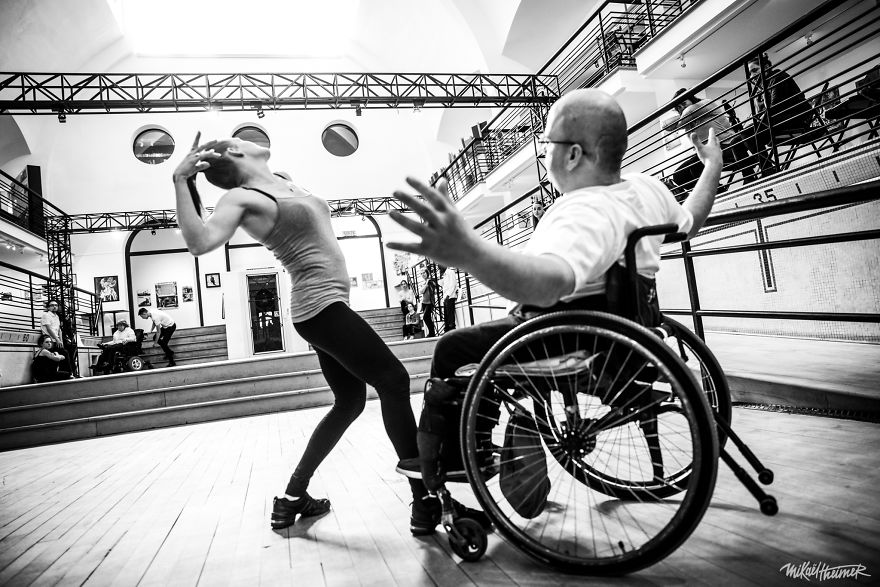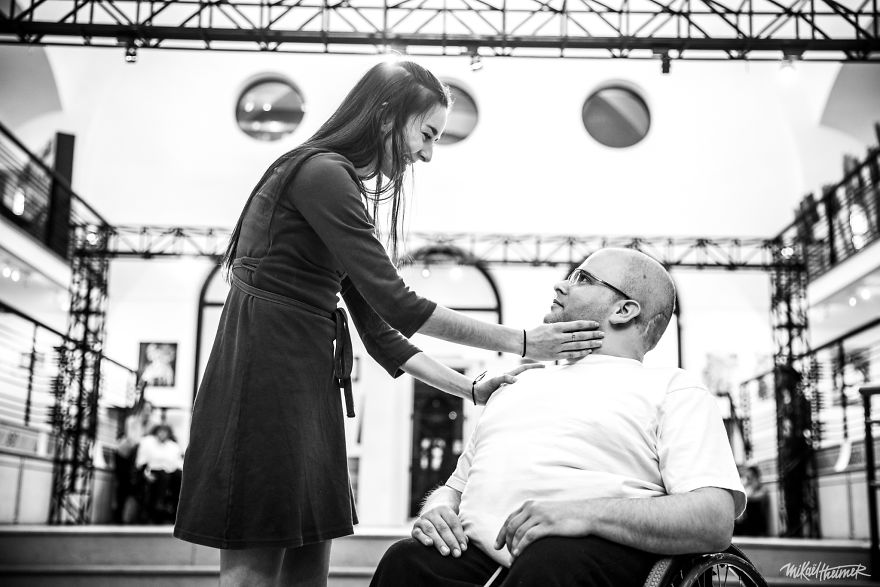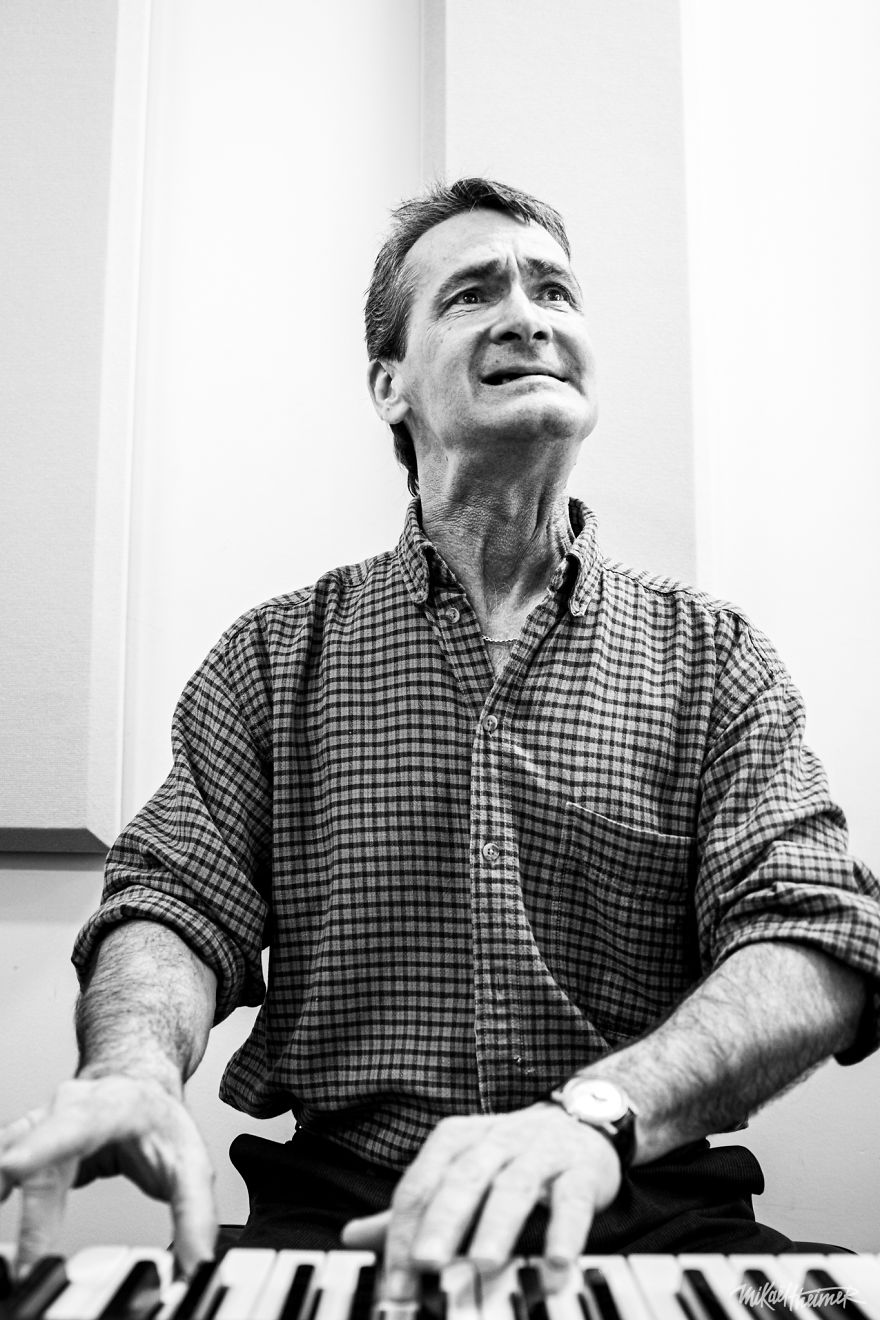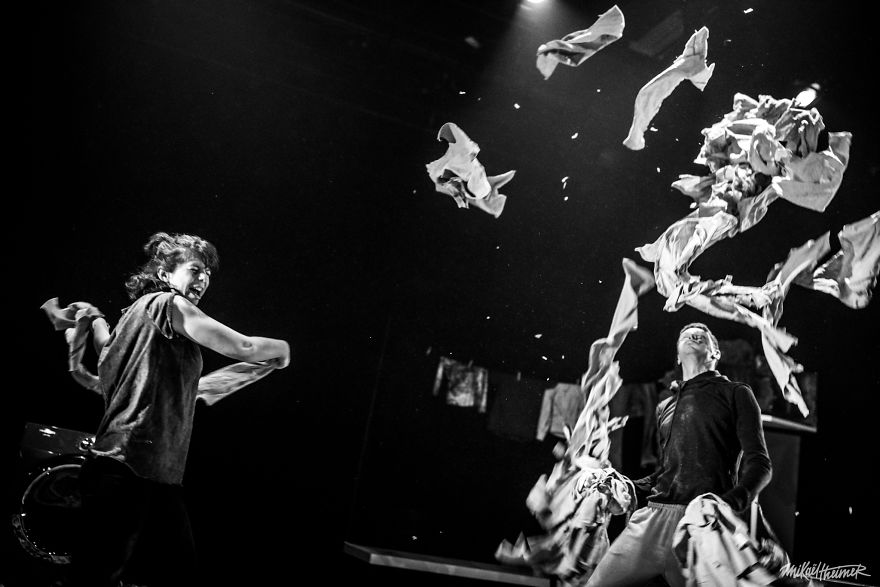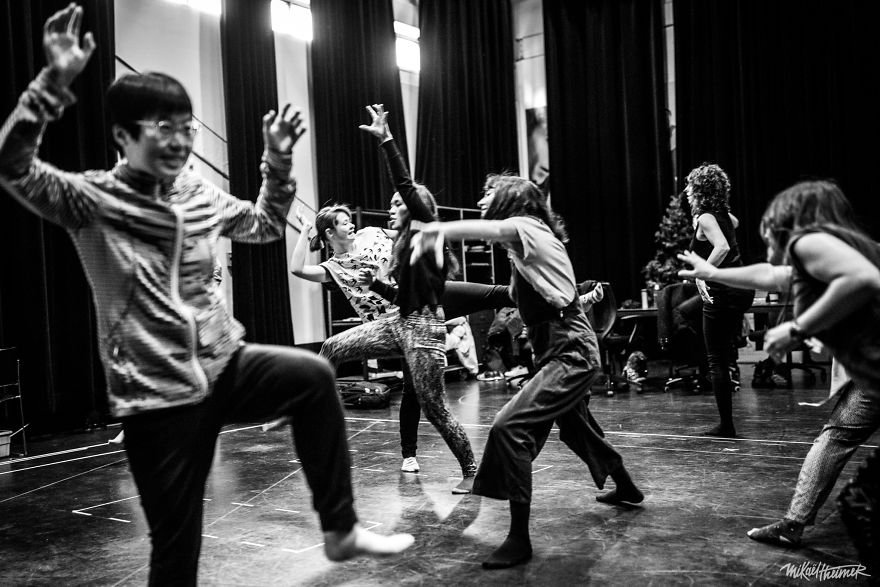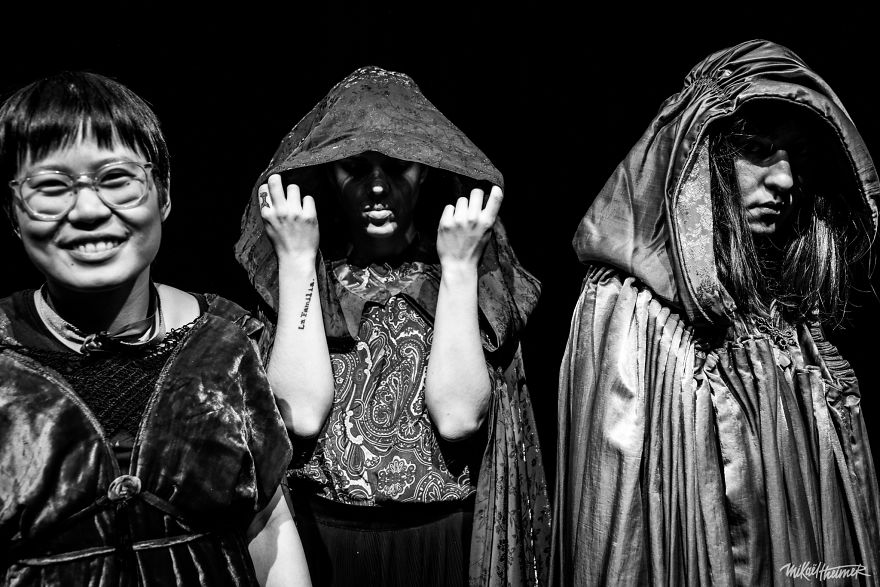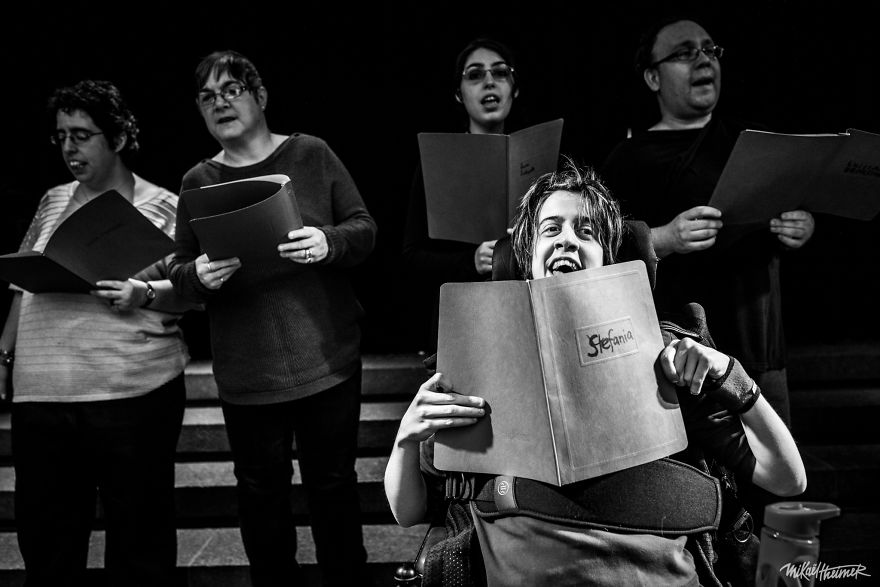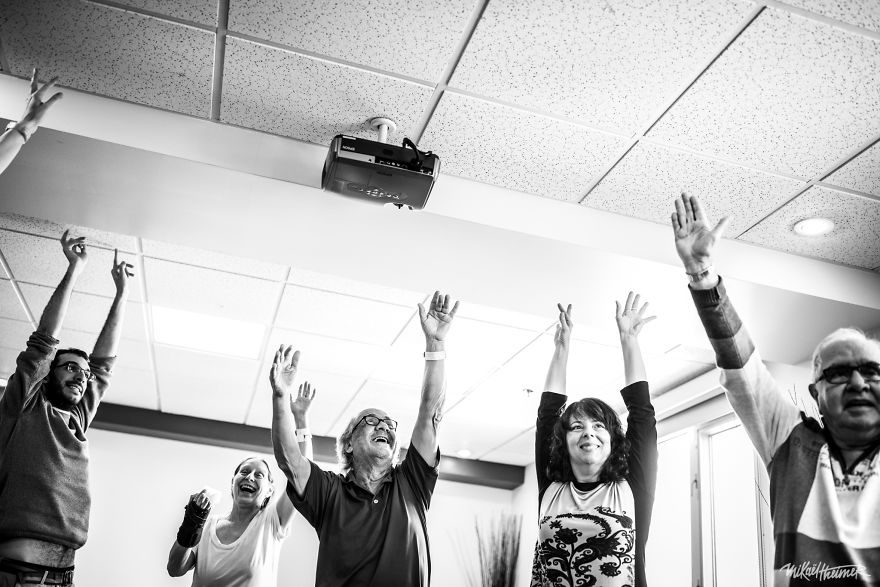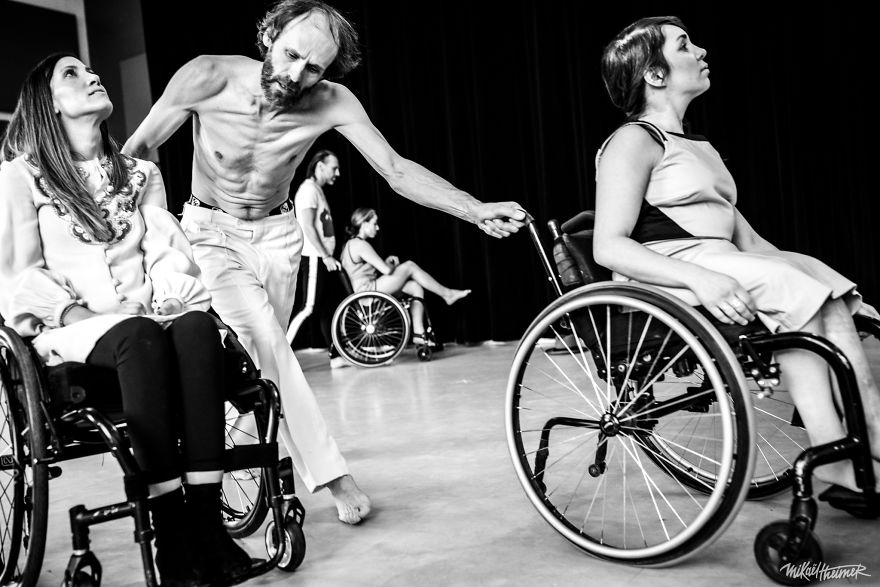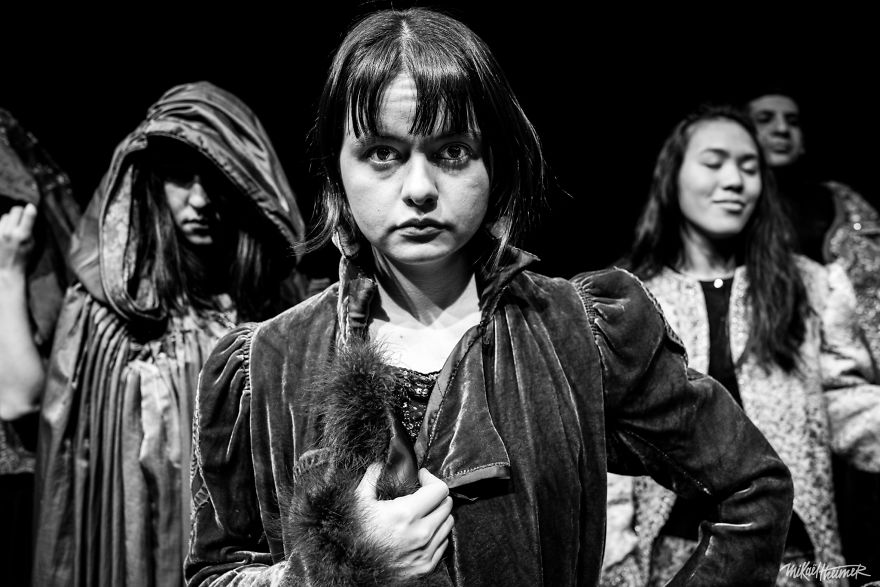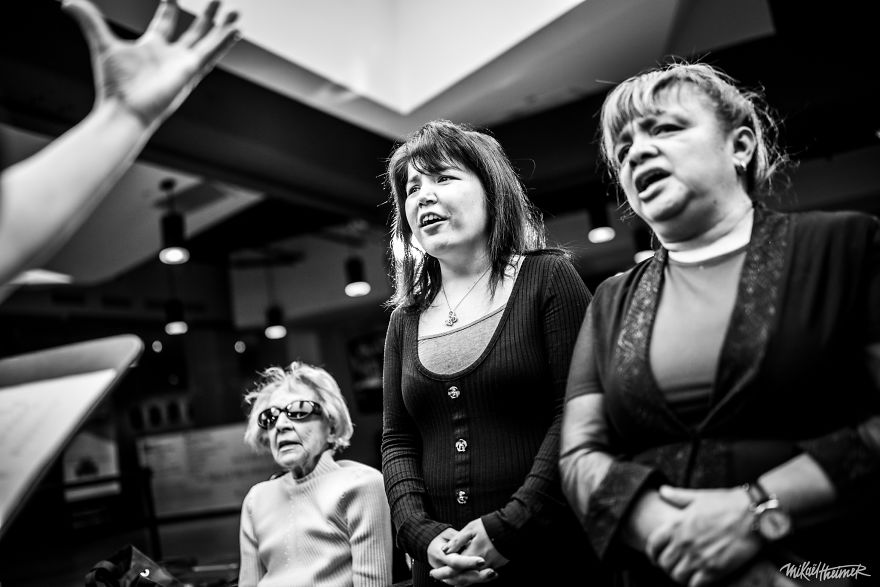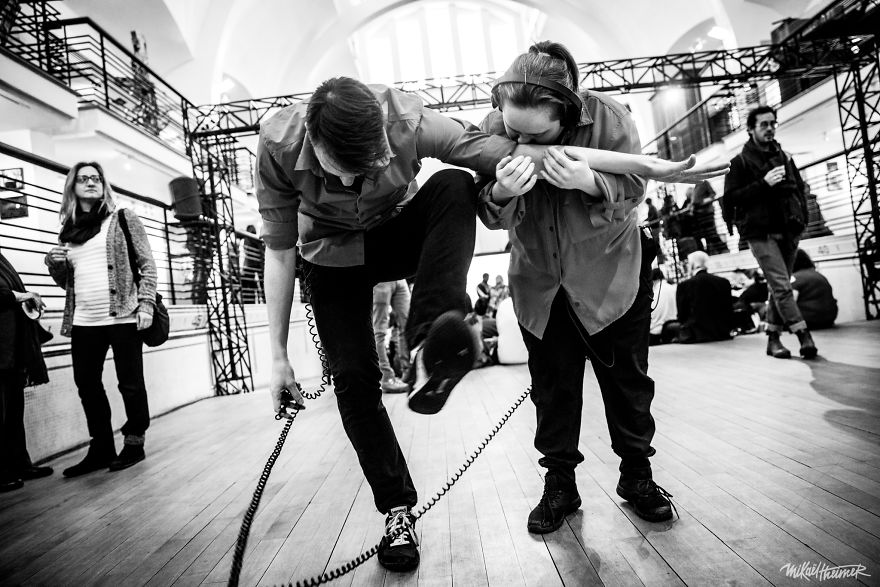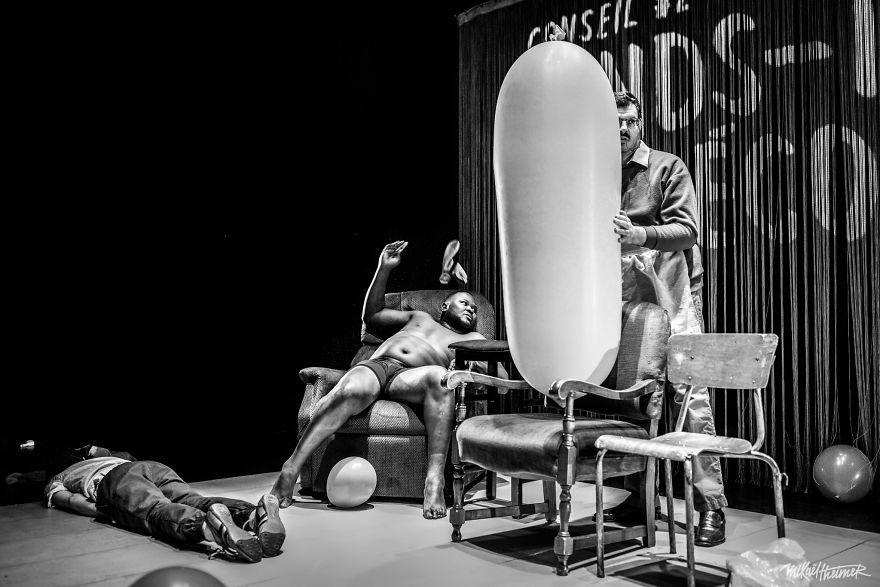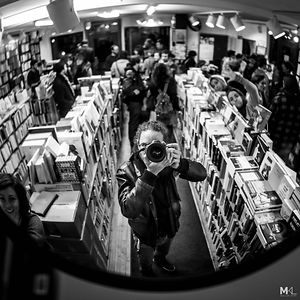Over the course of a year, I've met and photographed the work of companies and non-profits dedicated to making performing arts inclusive of people of all abilities, in Montreal.
I've met professional dancers living with physical disabilities and professional actors living with intellectual deficiencies. I've met a band formed by men who are still homeless to this day. I've met people using theater to re-learn to communicate after a stroke that left them unable to properly speak. I've met dancers using their art to build connections and bring joy to patients with Alzheimer's. I've met a band of percussionists living on the spectrum or with Down syndrome. I've met high functioning autistic youth learning ballet and doing theater. And the list goes on.
These artists challenge the boundaries of performing arts, redefining codes and esthetics. And they do so at the margins of the world of arts because we still have a hard time accepting difference as part of the norm. This photographic project was produced in part by the Place des Arts, and was only made possible thanks to the companies, non-profits, and artists it features.
More info: mikaeltheimer.com | Instagram | Facebook | twitter.com
This post may include affiliate links.
Mélanie Labelle and Joannie Douville from Corpuscule Danse.
Marie-Hélène Bellavance and Georges-Nicolas Tremblay from Corpuscule Danse.
B-Boy Luca "Lazylegz" Patuelli.
Roya Hosni, Joannie Douville and Maxime D. Pomerleau from Corpuscule Danse.
I think I've seen Roya Hosni before. A few years ago, I saw an extraordinary one-legged dancer performing in the subway. She was acrobatic, using her crutches as part of her choreography. And yes, she seemed to be choreographing on the fly!
During a dance party hosted by No Excuses No Limits movement, in a specialized school.
A custom made percussion instrument by a member of the band Osmia, created in the music room of a homeless shelter.
Georges-Nicolas Tremblay and Marie-Hélène Bellavance from Corpuscule Danse.
Dancers from an urban dance class by the National Centre for Dance Therapy.
Benoit Lachambre and France Geoffroy from Corpuscule Danse.
From a show played by actors struggling with mental health issues or loss of communication abilities, by the Théâtre du Nouveau Monde.
Gabrielle Marion-Rivard and Olivier Rousseau, in the show Cendres, by Productions des Pieds et des Mains.
The duo between a typical dancer and a dancer living with intellectual deficiency.
A scene from the show Dis Merci, by Joe Jack and John.
The issue isn't about disabled people being able to participate in the arts. It's the fact that they are largely invisible, because the powers that be have decided nobody wants to see them. Thanks to other artists like this photographer, we get to see the wonderful diversity that is the arts and its participants. We need to bring more visibility to all the different people that are part of our culture.
Amazing and inspirational! Somehow, it reminds me of the movie "Murderball" which is a documentary about paraplegics who play rugby in specially modified wheelchairs and competes in the paralympics.
The issue isn't about disabled people being able to participate in the arts. It's the fact that they are largely invisible, because the powers that be have decided nobody wants to see them. Thanks to other artists like this photographer, we get to see the wonderful diversity that is the arts and its participants. We need to bring more visibility to all the different people that are part of our culture.
Amazing and inspirational! Somehow, it reminds me of the movie "Murderball" which is a documentary about paraplegics who play rugby in specially modified wheelchairs and competes in the paralympics.

 Dark Mode
Dark Mode  No fees, cancel anytime
No fees, cancel anytime 




